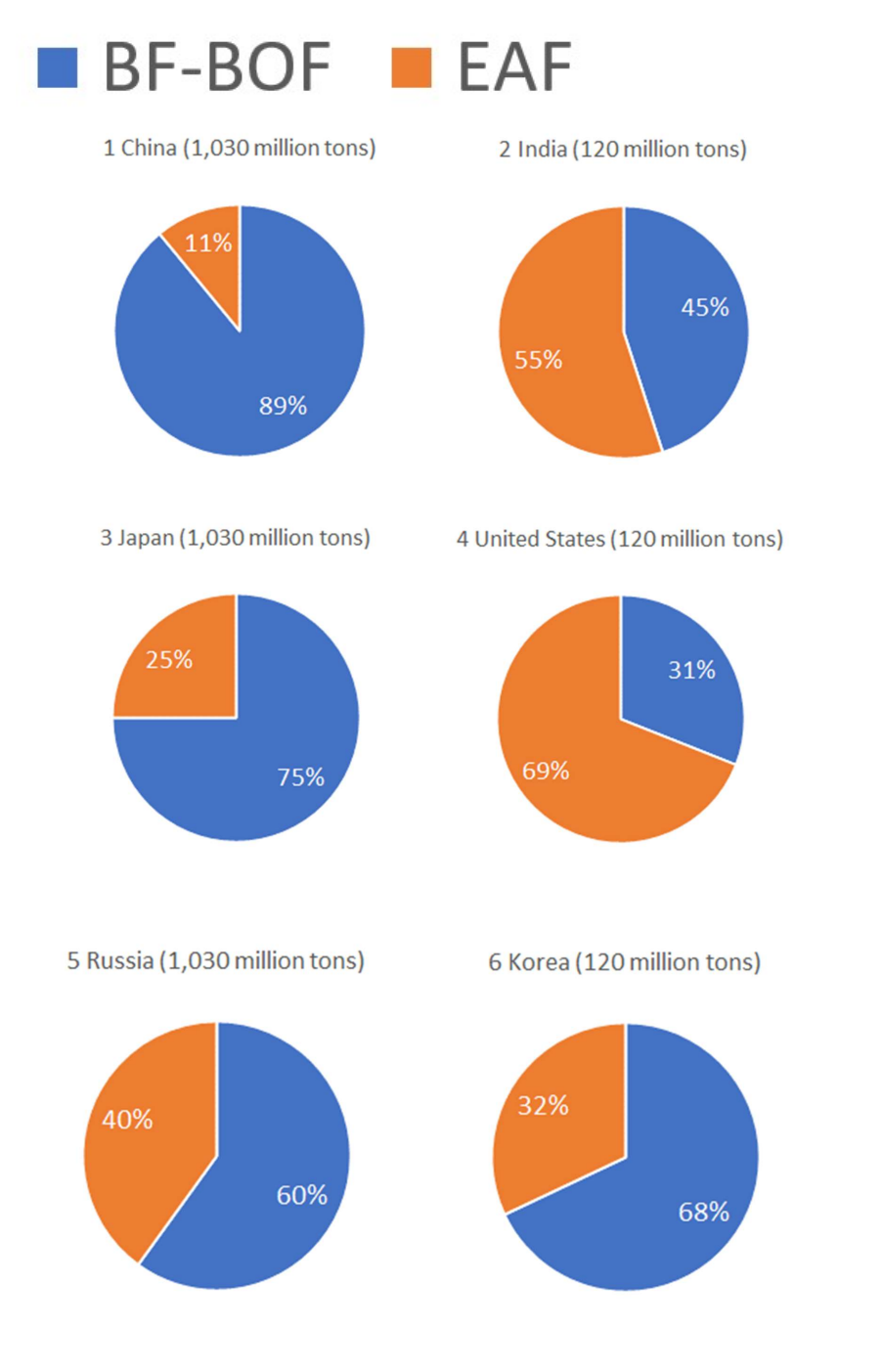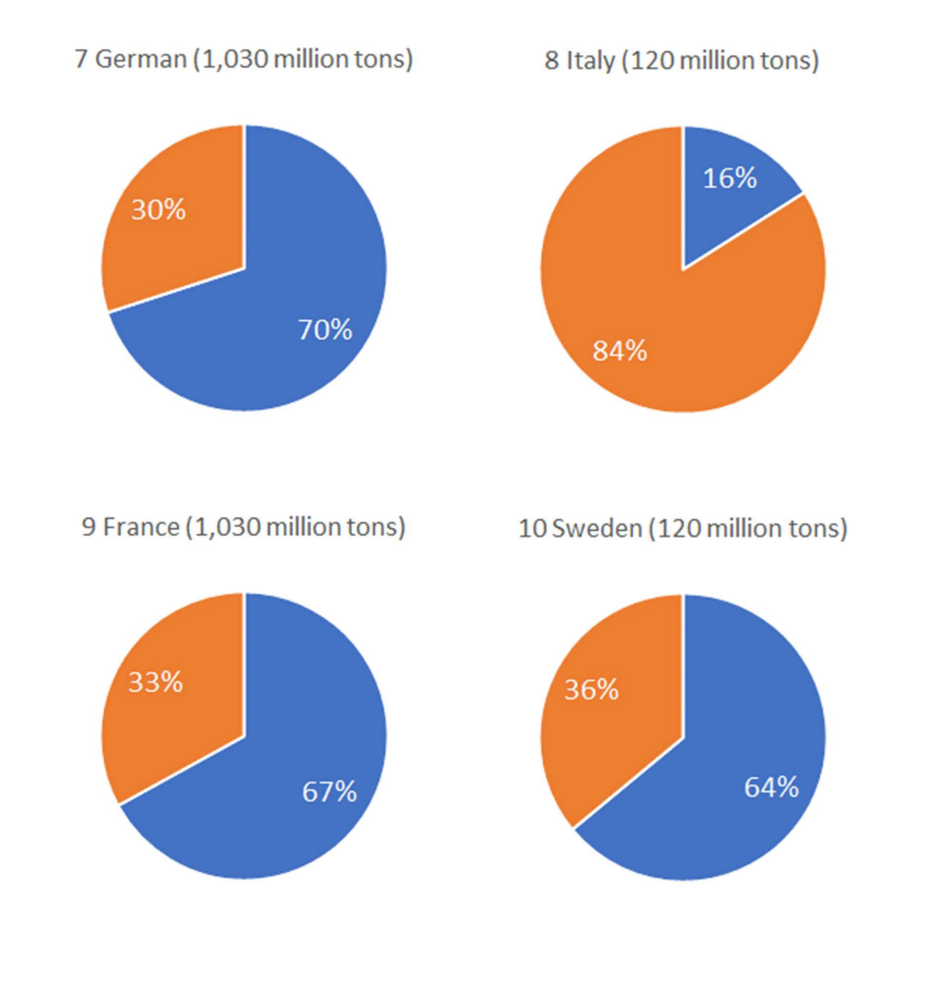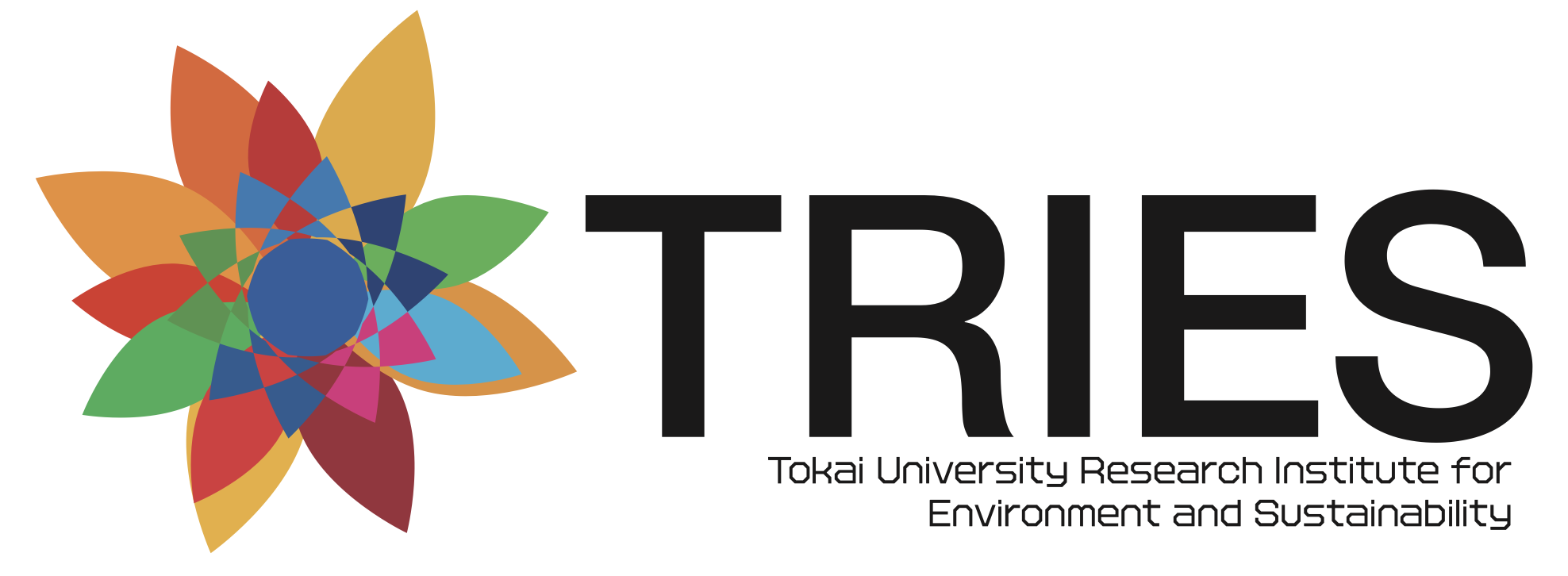Transforming the production processes in iron and steel industry toward carbon neutrality
05/15 2023
Author: Satoshi Honma
There are two production methods in iron and steel industry. One is the blast furnace-basic oxygen furnace (BF-BOF) route. Iron ore is reduced with coal in a blast furnace to make pig iron, and carbon is removed in a converter furnace to make steel. This method inevitably involves a large amount of CO2 emissions. The other is the electric arc furnace (EAF) route. The EAF produces steel from steel scrap. The EAF emits less CO2 than the BF-BOF. Toward carbon neutrality, it is important to switch from the BF-BOF to the EAF. In addition, the EAF is desirable in terms of resource recycling. However, the EAF has the problem that it is more difficult to obtain high-quality steel compared to the BF-BOF.


The ratio of the BF-BOF to the EAF varies by country (Fig. 1). Japan has a higher ratio of the EF-BOF than other developed countries.
In February 2023, the Japanese Cabinet confirmed the Basic Plan for the Green Transformation (GX) Policy. It aimed to achieve carbon neutrality and to improve industrial competitiveness.
As presented in the GX policy, the conversion from the BF-BOF to the EAF should be promoted. Honma et al. (2023) suggest that energy conversion from coal to electricity will reduce CO2 emissions with respect to the Japanese metal industry.
Lastly, along with the shift in production methods in the iron and steel industry, there is a need to reduce coal-fired power generation and increase renewable energy in power generation.
Reference:
Honma, S., Ushifusa, Y., Okamura, S., and Vandercamme, L. 2023. Measuring carbon emissions performance of Japan's metal industry: Energy inputs, agglomeration, and the potential for green recovery reduction. Resources Policy, 82, 103519.
Ministry of Economy, Trade and Industry. 2022. Domestic and International Trends Toward Carbon Neutrality in the Iron and Steel Industry (in Japanese).
